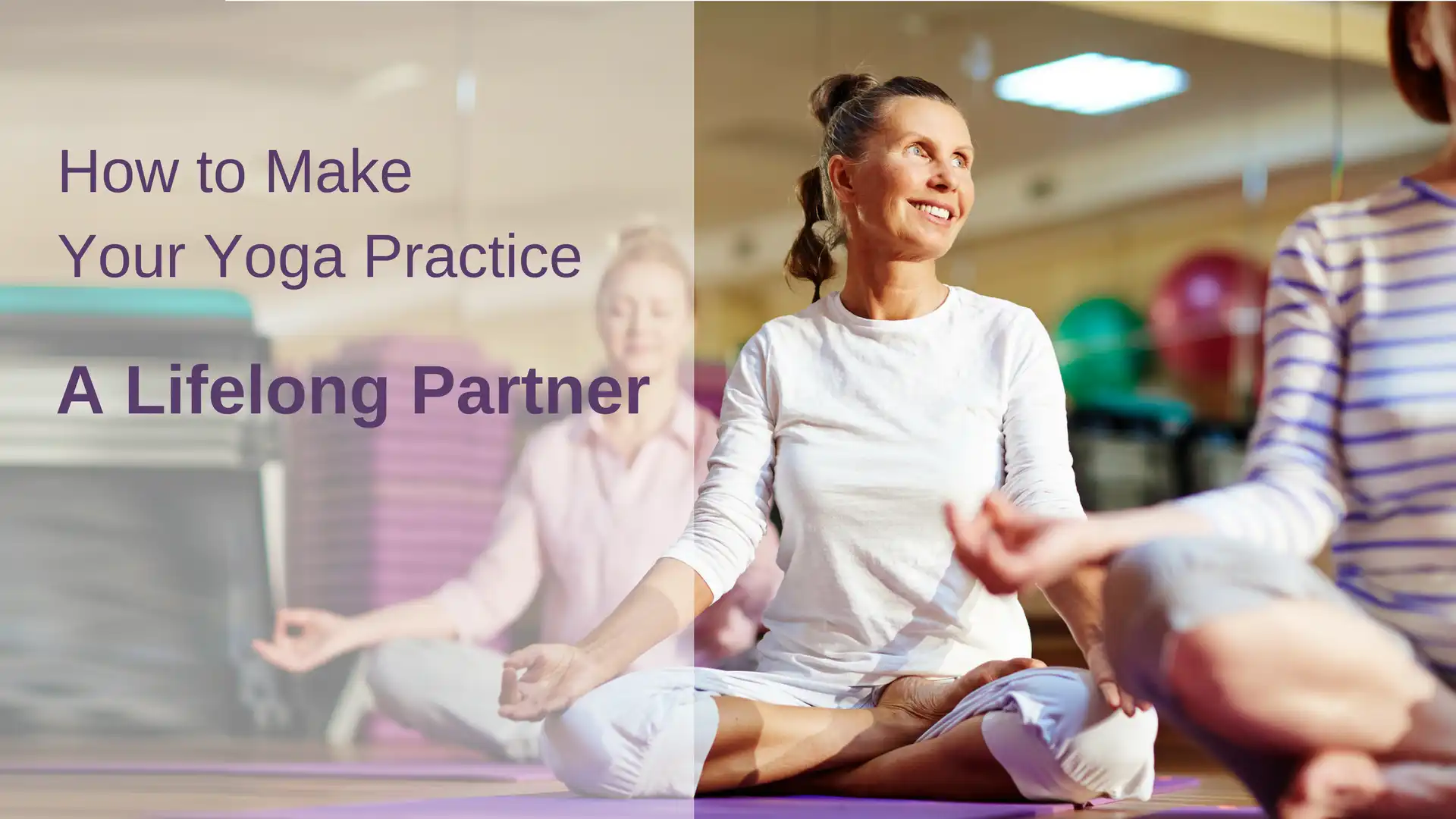Keys to Making Your Yoga Practice a Lifelong Partner

My lifelong yoga practice began in 1982. I was, of course, much younger then. I don’t know that it ever crossed my mind that I might someday enter my 50s or even my 60s. But once I began practicing asana from the first yoga class, I knew I’d found a practice I could continue for the rest of my life.
My picture back then was that my yoga practice would probably look pretty much like this: I’d practice asanas for at least an hour every day. I might change what poses I focused on, but the trajectory of my practice would always be with an eye to more “advanced” poses.
In actuality, my yoga practice has ebbed and flowed over the past 35 years. At times I’ve practiced diligently every single day and have, indeed, focused on fancy balancing poses. At other times, I’ve practiced just a few mindful asanas before sitting down to meditate.
Adapting Your Yoga Practice To Your Life
Early in my practice—the honeymoon stage—asana was everything. I assumed that my practice would only get more intense over the years. But like any long-term relationship, there have been times when asana practice was central to my life, and other times when it has taken a back seat to other practices.
In the early 1990s, as I was going through a very rough period, I practiced only Restorative yoga for more than a year. In the few years before my dysplastic left hip started giving me serious trouble, my practice was intense—daily standing poses and backbends. Once my hip started going downhill fast, I ditched intense yoga poses and focused on maintaining as much practical function as possible. Not quite two years after replacing my left hip, my right hip was replaced, which has changed my practice yet again.
Currently, as I continue to focus on healing my new left hip, and to baby my new right hip, my practice includes a brisk, but mindful, daily walk; some basic, mellow quadriceps and hamstring opening, a back bend or two, and some twists; Savasana and sitting meditation. Who knows how that practice will shift in the coming year?
Over many years of practice, I’ve learned the importance of adapting my practice to the realities of my daily life. Currently, I work several part-time jobs to make ends meet. I need sleep much more than I need a heavy, intense asana practice. My practice was very different during the years when I made a living just teaching yoga and meditation.
Tips for a Lifelong Yoga Practice

- If you continue to practice yoga for decades, your practice will likely need to change—multiple times. Sometimes it will be more active, sometimes more relaxed. Sometimes, a vigorous early-morning daily practice will be just what you need. At other times, an evening Restorative practice might be what best allows you to meet your life’s daily demands.
- Don’t be discouraged if you go through a period of not wanting to practice yoga at all. That doesn’t necessarily mean that your relationship with yoga has ended. It might just mean that you need a break to focus on other things. I’ve always found that I appreciate asana practice even more after I’ve taken a break.
- Be patient. Be open to how your yoga practice evolves. It may be that it morphs into something else entirely, a different movement modality or meditation practice. Or maybe you’ll continue to practice asana and/or meditation, but you’ll learn new ways of approaching them.
- Like any long-term relationship, your practice will deepen over time, even if it doesn’t retain that original honeymoon-like excitement. Sometimes, after you’ve gone through what seems like a plateau, you might discover something that makes you see your practice anew. Over time, yoga practice can become more integrated—a way of being rather than something we’re doing.
- Remain open. Know that your practice and your relationship to yoga will change. Enjoy the ride.
Would you like to learn more from YogaUOnline Contributor Charlotte Bell? If So, Read The Root Of Movement: Use These 5 Building Blocks Of Yoga To Free Your Practice.
Also, read...
Teaching Svadhyaya: 3 Ways to Encourage Self-Study in Yoga
In Celebration of Gray-Haired Yoga – Busting the Myth of the Yoga Body
Related courses

Charlotte Bell began practicing yoga in 1982 and began teaching in 1986. She was certified by B.K.S. Iyengar in 1989 following a trip to Pune. In 1986, she began practicing Insight Meditation with her mentors Pujari and Abhilasha Keays. Her asana classes blend mindfulness with physical movement. Charlotte writes a column for Catalyst Magazine and serves as editor for Yoga U Online. She is the author of two books: Mindful Yoga, Mindful Life, and Yoga for Meditators, both published by Rodmell Press. She also edits Hugger Mugger Yoga Products’ blog and is a founding board member for GreenTREE Yoga, a non-profit that brings yoga to underserved populations. A lifelong musician, she plays oboe and English horn in the Salt Lake Symphony and the folk sextet Red Rock Rondo whose 2010 PBS music special won two Emmys.



